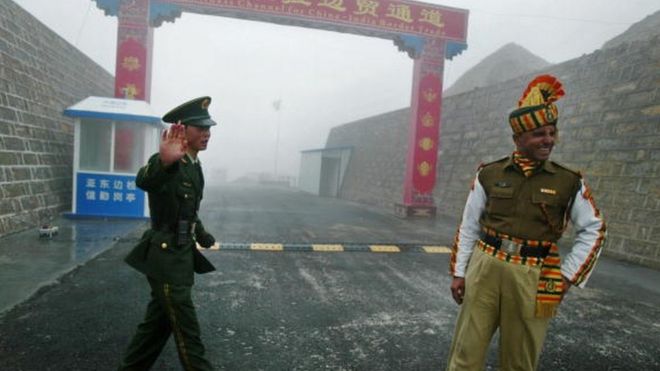
As far as we know through media reports the tensions are increasing day by day between India and China on the issue of Ladakh. There are two areas where India and China are having an intense standoff type crisis. One is East Ladakh and the other is Sikkim which is a north eastern state of India bordering Bhutan. Although Sikkim is not part of the Line of Actual Control which is the border dispute between the two nuclear powers but an important aspect to keep in mind is that the northern part of Sikkim is extremely vulnerable and is of great strategic importance for India.

Geo-politically a sense of insecurity that the Indian strategists feel is that over the years China has resolved its border dispute with twelve countries and now is looking forward to resolving its border with Bhutan which will be the thirteenth country leaving only India. Then there is a very high possibility that Bhutan will join China's One road one belt initiative very soon. This is a haunting nightmare for India as it sees its isolation in the near future.
In East Ladakh however according to reports India started building infrastructure and particularly a road in the Pangong Tso and Galwan area which the Chinese opposed rigorously. According to the Chinese narrative the infrastructure in this area must be demolished as is it a disputed area. Indian response to this is that out of all twenty three disputed areas between India and China, Galwan is excluded from it. Secondly the particular road that China is opposing is within India's own territory quite far from the Line of Actual Control.
We also have to understand that the unilateral decision that India took on 5th August was not just opposed by Pakistan but also China as far as the status of Ladakh is concerned. Now China strongly opposes India's manipulation of Ladakh's status on the battlefield. The issue here lies with the definition of disputed area between the two counties.
Let's talk about the strategic setbacks of India in the background of this crisis. In the year 2015 the Chinese undertook a huge military reform in the Chinese Army. In this revolutionary military reform PLA created the largest theater command based in Chengdu but what Indian strategists fear is that this command is looking towards India rather than what it stands for. Secondly, the PLA stationed 200,000 Chinese soldiers in the Tibet autonomous region. In February 2020 PLA also conducted major military exercises in this region showcasing the latest Chinese military technology which included Chinese Type-15 Light Battle Tanks and 155 mm Howitzers. These strategic maneuvering from China shell-shocked the Indian strategists and showed them the mirror of their extensively failed policies and lack of strategic farsightedness.

What we have to understand is that China has not indulged itself in a hybrid warfare which most Indian counterparts probably perceive rather Chinese policies are of a different nature and type. The Indian military leadership General Bipin Rawat wanted to counter PLA with a mixture of mechanized warfare and a mixture of network centric warfare in Tibet autonomous region. But according to an Indian defense analyst Pravin Sawhney this will fail badly, he asserts that "the Indian military and especially the Indian army is so obsessed with Pakistan and Psychological warfare that we fail to see what the PLA is preparing".
The geo-political elements in these events are as follows; On 12th October 2020 the Chinese president paid a visit to Chennai, India and met with PM Modi. In his talks the Chinese president discussed something which the Indians never predicated. He discussed an urgent need for trilateral cooperation between India, China and Pakistan. Keeping in mind that this trilateral model is not a meditative role rather a cooperative role in which the core issue of Kashmir shall be discussed and resolved. Indian strategists and diplomats were unaware of this move which is another failure strategically and diplomatically. On top of that the blunt attitude of Nepal with India is also quite surprising and odd for Indians.
According to Pravin Sawhney India has no other option or choice rather than making bilateral peace with Pakistan, avoiding China's trilateral offer which is far more damaging for India and she can never get a good bargain deal out of it if pursued. India is in a very weak situation, multiple Indian army soldiers have been killed including a colonel. India's government is under immense pressure from the Indian people and especially the Indian army, we can also see a clear division between the civil and military leadership which is very unique and rare in India. The Chinese army has shown and exposed the mythical strength and capability of Indian army in the battlefield and in diplomatic forums, counter to what the Indian media used to sell their passive masses.







0 Comments
Please comment if you do not agree with any of the content of this article